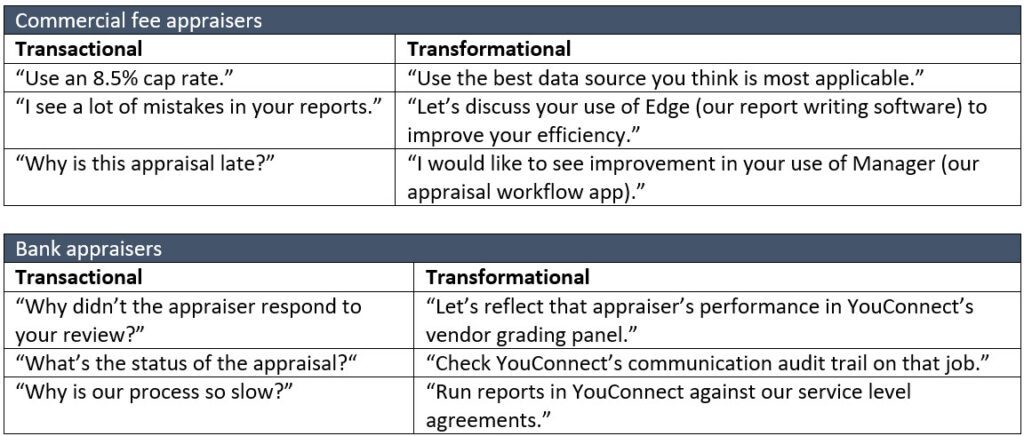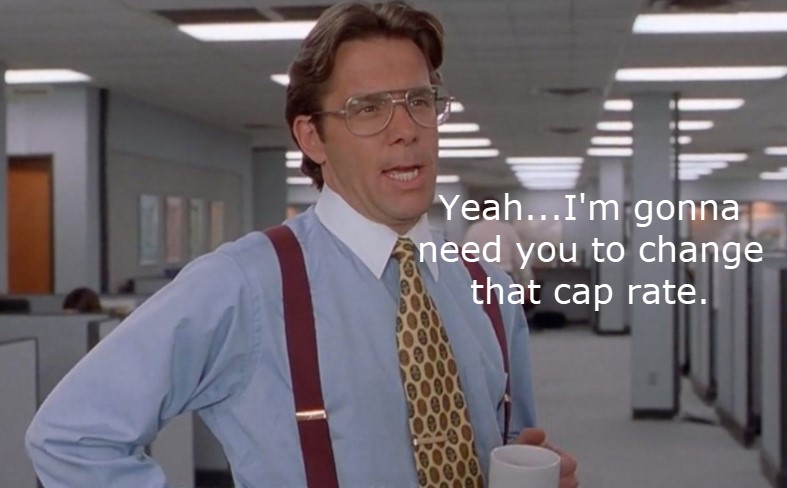I didn’t realize that I was managing my appraisers the wrong way for two decades. I thought I was doing the right thing, being helpful in answering all their questions. Instead, I was creating a culture of dependents. My leadership style was summarized with, “Just ask Jeff.” It’s inefficient, lacks productivity and is not scalable. I became the thing that I hate most, a micromanager. “Mr. To-Do List” wandering the office. No bueno.
When you do the same behavior for an extended period of time, it becomes natural, reflexive. Somebody walks by and asks you a question, you stop everything you’re doing and answer it. Somebody pops open a chat window disrupting your train of thought, you stop everything and answer it. Same thing for emails and phone calls. Problem is, you tend to get very specific in what you want to see. You suffocate your staff’s initiatives and creativity. You mean well but as leader of your appraisal firm or appraisal department, everyone knows it needs to be your way. Exacting. Specific. Only one way.
Outcome versus output
Defined outcome. Measure performance. Lead and coach to success. This management style is alien to most in the valuation world. We tend to be technicians. We need to focus on the valuation, but not every single detail. Take a coaching position. Encourage your staff to perform. Provide guidance. Encourage communication and ideation. Select and successfully implement software appraisal tools to be successful. Move away from the manual process.
Build people, build the business
Listen for feedback. If your software tools are not fully implemented across the board, have a meeting. Ask your staff what they like and hate about a particular solution. Seek an outcome, rather than a list of complaints. Ask your peers what solutions they think works best. Get referrals.
Most of us in the valuation vertical say the same thing, “I’m swamped.” The feeling of swampiness comes from micromanagement. It comes from lack of software solutions and a coaching style to encourage your staff to fully take advantage of productivity tools.
Transactional versus transformational
Think of transactional as a to-do list. Transformational, on the other hand, moves the productivity needle by energizing your people to make their own decisions. Yes, they are going to make some mistakes. Yes, they’re going to do it differently than how you would do it. But in the end, you’re going to get a significant improvement in throughput. You will make your people happier trusting their judgment. As a manager or leader, it frees up your time and brain to focus on the more important strategic stuff.
Here’s a couple examples of transactional versus transformational leadership styles.

With defined outcomes, you will move away from the chronic condition of, “I’m swamped.” Measure performance by grading your appraisers, measure deliverables and communicate your expectations. Change your leadership style from transactional to transformational and watch the magic happen.


